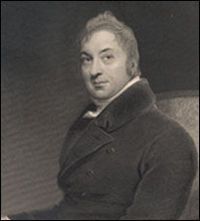“Punting the Pundits” is an Open Thread. It is a selection of editorials and opinions from around the news medium and the internet blogs. The intent is to provide a forum for your reactions and opinions, not just to the opinions presented, but to what ever you find important.
Thanks to ek hornbeck, click on the link and you can access all the past “Punting the Pundits”.
Follow us on Twitter @StarsHollowGzt
New York Times Editorial Board: It Condemns I.R.S. Audits
The Internal Revenue Service was absolutely correct to look into the abuse of the tax code by political organizations masquerading as “social welfare” groups over the last three years. The agency’s mistake – and it was a serious one – was focusing on groups with “Tea Party” in their name or those criticizing how the country is run.
The I.R.S. should have used a neutral test to scrutinize every group seeking a tax exemption for “social welfare” activity – Democrat or Republican, conservative or liberal. Any group claiming tax-exempt status under Section 501(c)(4) of the internal revenue code can collect unlimited and undisclosed contributions, and many took in tens of millions. They are not supposed to spend the majority of their money on political activities, but the I.R.S. has rarely stopped the big ones from polluting the political system with unaccountable cash.
Robert Parry; Ronald Reagan: Accessory to Genocide
More than any recent U.S. president, Ronald Reagan has been lavished with honors, including his name attached to Washington’s National Airport. But the conviction of Reagan’s old ally, ex-Guatemalan dictator Rios Montt, for genocide means “Ronnie” must face history’s judgment as an accessory to the crime
The conviction of former Guatemalan dictator Efrain Rios Montt on charges of genocide against Mayan villagers in the 1980s has a special meaning for Americans who idolize Ronald Reagan. It means that their hero was an accessory to one of the most grievous crimes that can be committed against humanity.
The courage of the Guatemalan people and the integrity of their legal system to exact some accountability on a still-influential political figure also put U.S. democracy to shame. For decades now, Americans have tolerated human rights crimes by U.S. presidents who face little or no accountability. Usually, the history isn’t even compiled honestly.
Supreme Court Justice Antonin Scalia made a point of emphasizing during the Bush v. Gore arguments in December 2000 that there is no federal constitutional guarantee of a right to vote for president. Scalia was right. Indeed, as the reform group FairVote reminds us, “Because there is no right to vote in the U.S. Constitution, individual states set their own electoral policies and procedures. This leads to confusing and sometimes contradictory policies regarding ballot design, polling hours, voting equipment, voter registration requirements, and ex-felon voting rights. As a result, our electoral system is divided into 50 states, more than 3,000 counties and approximately 13,000 voting districts, all separate and unequal.”
Mark Pocan and Keith Ellison want to do something about that.
The two congressmen, both former state legislators with long histories of engagement with voting-rights issues, on Monday unveiled a proposal to explicitly guarantee the right to vote in the Constitution.
John Aravosis: When 3 Gunmen Shoot 19 at a Mother’s Day Parade, It’s Not “Terrorism”
No terrorism please, we’re gunmen. A bizarre story out of New Orleans, where two or three gunmen opened fire on a Mother’s Day parade, injuring 19 people, including two children.
Sure sounds awfully familiar, almost like a redux of the Boston Marathon bombing. But you’d be wrong.
You see, when two guys use bombs to hurt people en masse at a marathon, it’s instantly “terrorism.” But when two to three people use guns to hurt people en masse at a parade, it’s simply “the relentless drumbeat of street violence.”
What’s the difference?
A homemade bomb versus a gun, by the looks of it.
Pauk Buchheit: Atlas Shrugged Off Taxes
Ayn Rand’s novel “Atlas Shrugged” fantasizes a world in which anti-government citizens reject taxes and regulations, and “stop the motor” by withdrawing themselves from the system of production. In a perverse twist on the writer’s theme the prediction is coming true. But instead of productive people rejecting taxes, rejected taxes are shutting down productive people.
Perhaps Ayn Rand never anticipated the impact of unregulated greed on a productive middle class. Perhaps she never understood the fairness of tax money for public research and infrastructure and security, all of which have contributed to the success of big business. She must have known about the inequality of the pre-Depression years. But she couldn’t have foreseen the concurrent rise in technology and globalization that allowed inequality to surge again, more quickly, in a manner that threatens to put the greediest offenders out of our reach.
Nick Turse: Nuclear Terror in the Middle East
Lethality Beyond the Pale
In those first minutes, they’ll be stunned. Eyes fixed in a thousand-yard stare, nerve endings numbed. They’ll just stand there. Soon, you’ll notice that they are holding their arms out at a 45-degree angle. Your eyes will be drawn to their hands and you’ll think you mind is playing tricks. But it won’t be. Their fingers will start to resemble stalactites, seeming to melt toward the ground. And it won’t be long until the screaming begins. Shrieking. Moaning. Tens of thousands of victims at once. They’ll be standing amid a sea of shattered concrete and glass, a wasteland punctuated by the shells of buildings, orphaned walls, stairways leading nowhere.
This could be Tehran, or what’s left of it, just after an Israeli nuclear strike.


Recent Comments